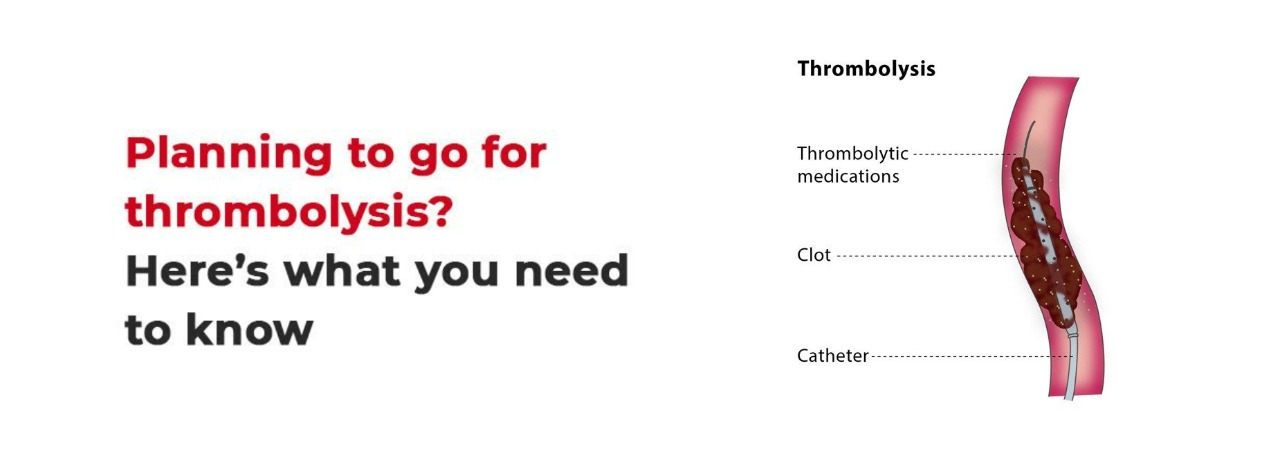
 Emergency No: 08062136599
Emergency No: 08062136599
Cardiology | by Dr. Dhiman Kahali | Published on 20/11/2021
Thrombolysis, or thrombolytic therapy, is a treatment modality that aims at dissolving clots obstructing blood flow, so as to restore the normal flow of blood in the body and negate the risks of chronic damage to any organ or tissue. The procedure can be performed in two different ways - either by intravenous administration of clot-dissolving drugs, or doing the same with the help of the cardiac catheterization technique, in which a catheter is introduced inside the patient’s body. Experts from the best cardiac hospital in Kolkata may also use a mechanical device to extract the clot during catheterization.
The procedure is often recommended on an emergency basis so as to immediately restore normal blood flow in the vessels that serve as a passage for oxygenated blood flowing toward the heart and brain. Any delay in treatment in such cases can result in serious complications like a heart attack or ischemic stroke.
Thrombolysis may be done with major heart procedures to treat blood clot-related and alleviate the chances of complications related to the same in various treatment modalities like bypass grafts and dialysis catheters. It can also be used to treat clots in other areas like the legs, pelvic area, and upper extremities. If such clots are not addressed with timely intervention, these can break off from the primary site of origin and travel to the lungs, resulting in acute pulmonary embolism.
A blood clot is a term used for a clump of blood, found in a semi-solid state. We usually develop clots when we get injured and experience external bleeding due to a cut or scratch. However, sometimes, these can develop internally, and instead of helping in stopping unnecessary blood loss, these further contribute to complications. While some blood clots developed inside the veins dissolve on their own, others won’t. Blood clots that are immobile don’t usually cause any serious complications, however, those which move freely, can prove to be life-threatening and are considered a medical emergency.
By now, you must have understood that blood clots develop in the blood vessels, however, blood vessels consist of the arteries and veins, and based on this, blood clots are broadly classified as arterial clots and venous clots. The former develops in the arteries and calls for the need for immediate medical intervention. These are usually categorized by chronic pain and paralysis, usually resulting in a heart attack or stroke. The latter develops in the veins and develop at a comparatively slower pace. These can also prove to be dangerous if not treated immediately. The most common type of venous clot is DVT or deep vein thrombosis.
As you are undergoing any procedure, it is important to understand that what may work for one patient might not necessarily work for others. No doubt the procedure is highly successful, it is pertinent to note that there is nearly a 25 percent chance that it may not work for you. 12 percent of the patients might even develop the clot again. So, it is important to consult a specialist before planning your treatment. With proper evaluation and assessment, the best cardiologists in Kolkata curate a proper treatment plan, that suits your specific needs and requirements, thereby ensuring highly successful outcomes.